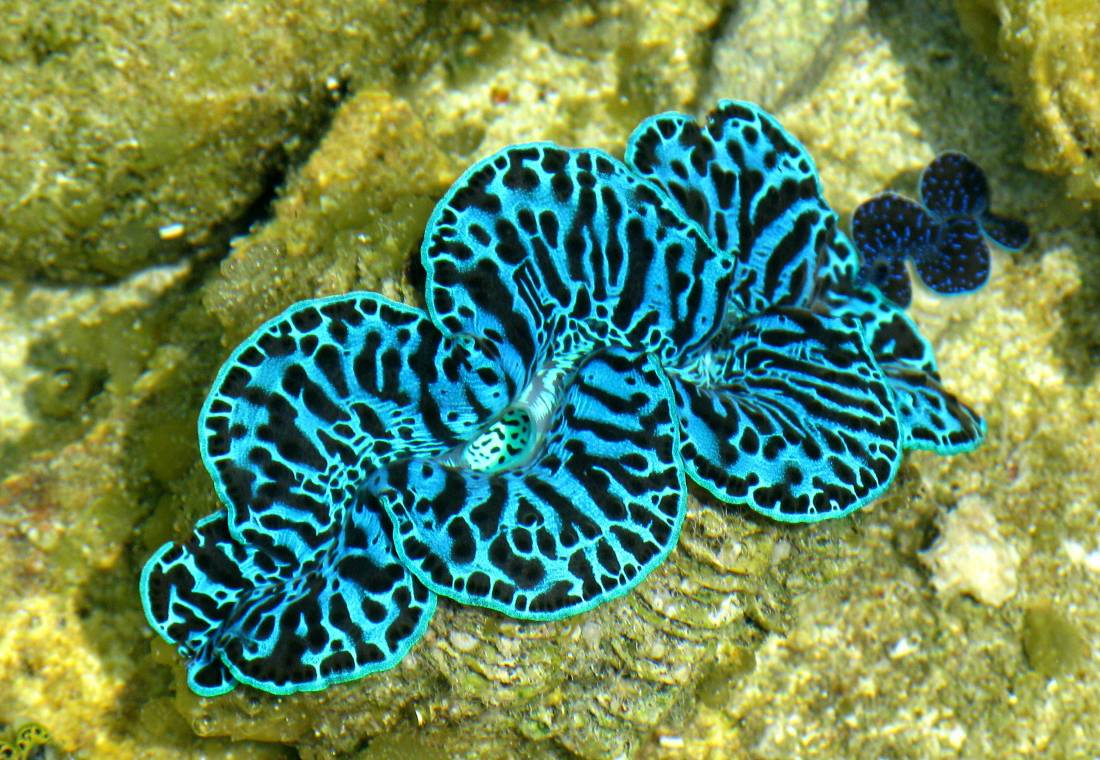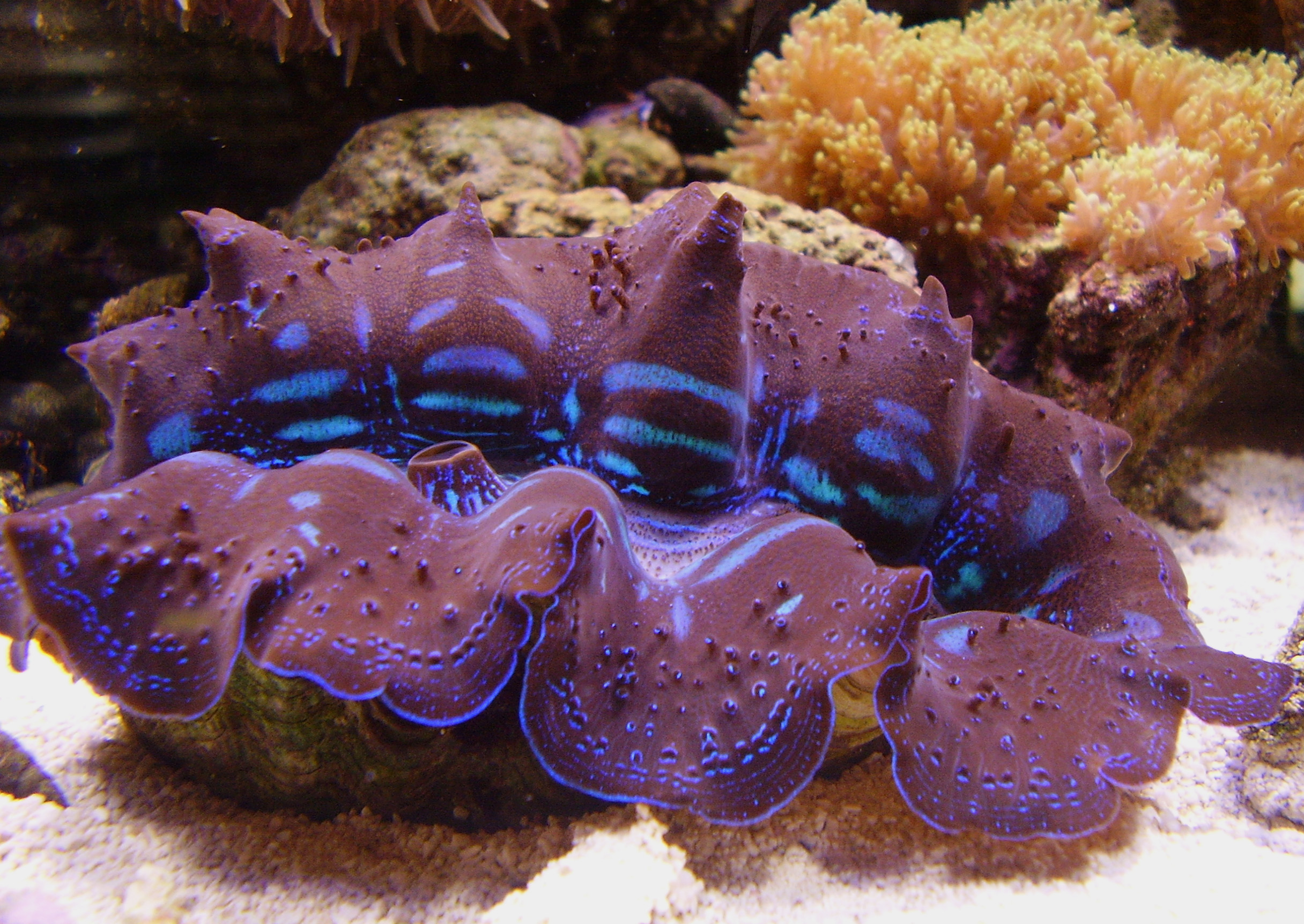- Description
True giants among the clams, some shells of the Tridacnidae family weigh in at 300 pounds and 3 feet in length. This large mollusc represents an evolutionary off-shoot of the cockle family, which has become highly specialized in both its structure and nutrition. The shell remains attached by a large byssus that, contrary to other clams, appears to emerge from a gap on the dorsal side, near the hinge (see picture at lower right). What has actually happened is that the hinge and umbones have migrated 180 degrees to the ventral position with respect to the internal organs. One adductor muscle has disappeared, and the mantle –actually, enlarged fleshy siphons– fills the entire fluted opening of the shell. All live vertically oriented with the hinge side down.
The mantle has brilliantly colored pigment spots that protect against excessive sun. Deeper, inside the blood sinuses, the trydacnas host millions of living symbiotic, microscopic algae, or zooxanthellae (“zoh-ox-anth-a-lee”). Light for photosynthesis is further focussed on the algae by transparent hyaline lenses along the siphon. The lenses are like those of siphonal “eyes” found in cockles. Although the clam is able to make use of filter feeding like other clams, the zooxanthellae photosynthesize large quantities of nutrient compounds. These products are used as food by the clam, and its excretory organs are correspondingly enlarged to handle a large nitrogenous load from algal metabolism. Where tridacna are found, the zooxanthellae play a key role in coral reef formation by providing food for many invertebrate organisms
- Classification
-
- Class: Bivalvia
-
- Subclass: Heterodonta
-
- Order: Veneroida
-
- Superfamily: Tridacnacea
-
- Family: Tridacnidae
- Major Genera
-
- Genus: Hippopus
- Genus: Tridacna








Genus: Hippopus
hippopus porcellanus
Genus: Tridacna
crocea derasa evae gigas lorenzi
maxima elongata mbalavuana ningaloo noae
rosewateri squamosa squamosina














